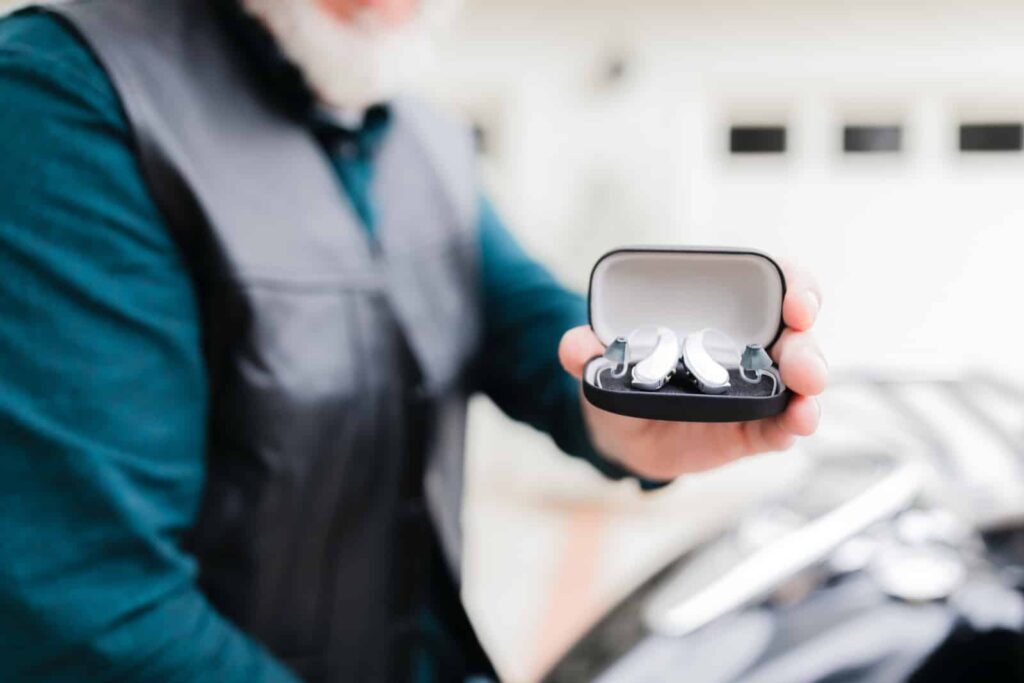As the vibrant colors of autumn herald the arrival of fall, the season also brings about challenges for individuals with hearing aids. The combination of cold temperatures and damp weather can pose risks to these delicate devices. Whether you're strolling through a misty park or attending a chilly outdoor event, it's essential to safeguard your hearing aids to ensure their optimal performance. In this article, we'll explore practical tips on how to protect your hearing aids from the cold and wet conditions that fall weather often brings.
Understanding the Risks
Hearing aids are sophisticated electronic devices designed to enhance auditory experiences. However, they are not impervious to the elements, and exposure to cold and moisture can lead to malfunctions, reduced battery life, and overall damage. Fall weather, with its fluctuating temperatures and occasional rain showers, poses specific challenges that require careful consideration and proactive measures.
Invest in Water-Resistant Hearing Aids
The first line of defense against wet weather is to choose hearing aids that come equipped with water-resistant features. While these devices may not be completely waterproof, they offer a level of protection against moisture, helping to prevent damage caused by rain or humidity. When selecting hearing aids, inquire about their water-resistant rating and opt for models with higher ratings for increased protection.
Utilize Hearing Aid Covers
To provide an additional layer of defense, consider using hearing aid covers or sleeves. These accessories are designed to protect hearing aids from moisture and cold temperatures. They are typically made from water-resistant materials and fit snugly over the device. Hearing aid covers are especially useful during fall weather, as they can prevent rain or dampness from seeping into the delicate components of the device.
Keep Hearing Aids Dry
Moisture is a primary adversary for hearing aids, and keeping them dry is crucial for maintaining functionality. Invest in a dehumidifier specifically designed for hearing aids to remove any accumulated moisture. When not in use, store your hearing aids in a dry and cool place. Additionally, consider using a hearing aid dryer or desiccant, which can help absorb excess moisture and extend the lifespan of your devices.
Use Protective Gear
In the colder months, it's common to wear hats, scarves, and other accessories to stay warm. While these items are essential for personal comfort, they can inadvertently pose a threat to hearing aids by exposing them to moisture. Be mindful of where your hearing aids are positioned when dressing for the weather. If possible, opt for headgear that covers your ears without putting pressure on the devices. This simple adjustment can go a long way in protecting your hearing aids from the elements.
Invest in Wind Protection
Fall is often accompanied by brisk winds that can carry moisture and debris. To shield your hearing aids from these elements, consider investing in wind protection accessories. Wind guards or wind socks can be added to your devices to minimize exposure to strong winds, reducing the risk of moisture infiltration. These small additions can make a significant difference in maintaining the longevity of your hearing aids.
Regular Cleaning and Maintenance
Fall weather can bring a mix of rain, mud, and leaves, which may find their way onto your hearing aids. Regular cleaning is essential to prevent debris from interfering with the device's performance. Use a clean, dry cloth to wipe away any dirt or moisture on the exterior. Additionally, inspect the battery compartment and other openings to ensure they are free from debris. Routine maintenance not only preserves the functionality of your hearing aids but also helps identify potential issues before they escalate.
Optimize Battery Performance
Cold temperatures can affect battery performance, leading to quicker drainage. To counteract this, keep spare hearing aid batteries in a warm and dry place, such as an inside pocket. When changing batteries, do so in a sheltered environment to minimize exposure to the cold. Consider investing in rechargeable hearing aids, which can be a sustainable and convenient option for fall and winter weather, as they are not as susceptible to temperature fluctuations.
Seek Professional Advice
If you encounter any issues with your hearing aids during the fall weather, it's crucial to seek professional advice promptly. Avoid attempting to fix the devices yourself, as this may result in further damage. Contact your hearing healthcare professional for guidance and repairs. They can assess the condition of your hearing aids, address any issues, and provide recommendations on how to safeguard them in challenging weather conditions.
Conclusion
Protecting your hearing aids from the cold and wet conditions of fall weather requires a combination of proactive measures and thoughtful adjustments to your daily routine. By investing in water-resistant devices, using protective accessories, and adopting good maintenance practices, you can ensure that your hearing aids continue to deliver optimal performance even in challenging weather conditions. Remember, a little care goes a long way in preserving the functionality and longevity of these essential devices, allowing you to fully enjoy the sights and sounds of the autumn season.


No comments yet